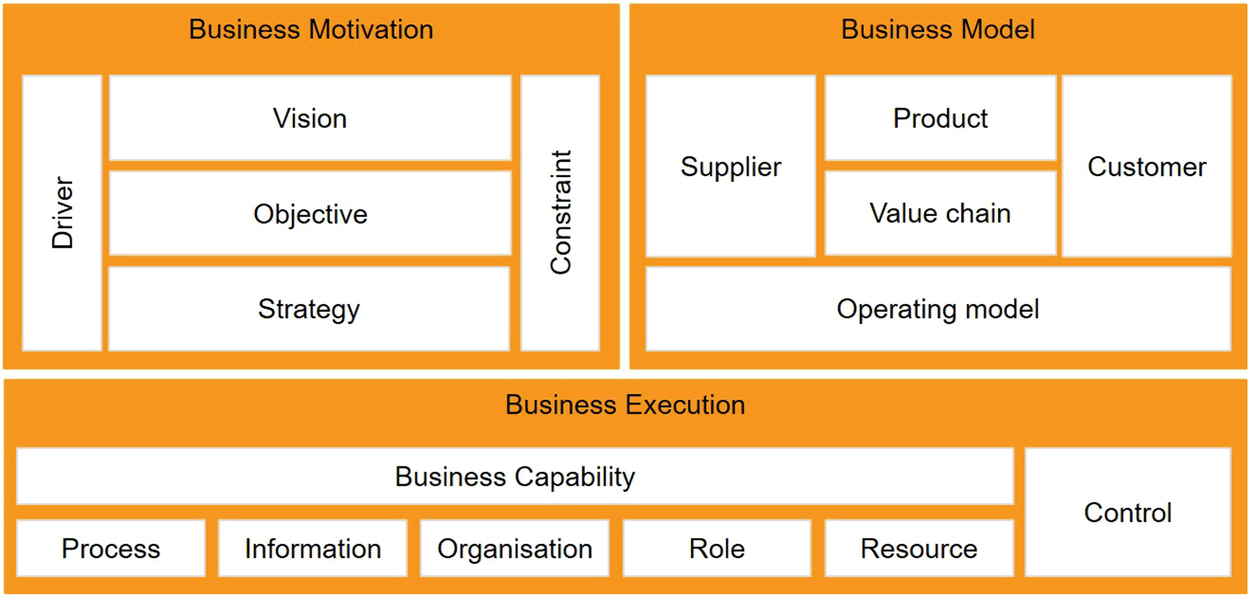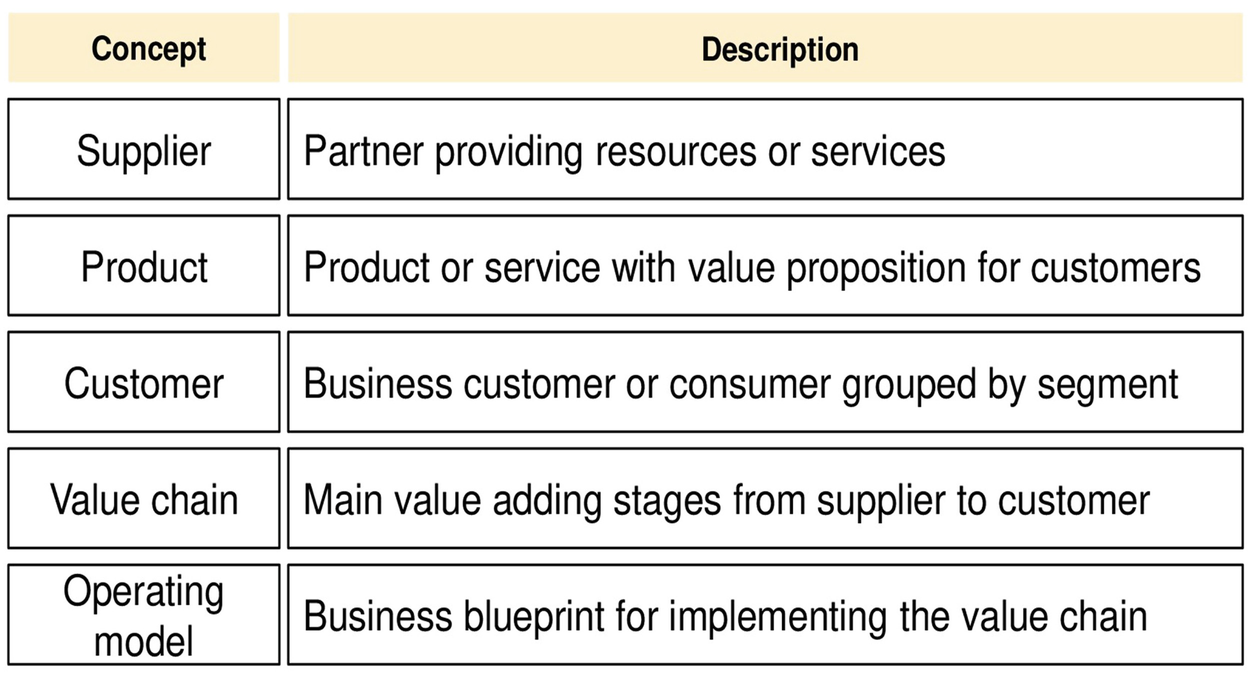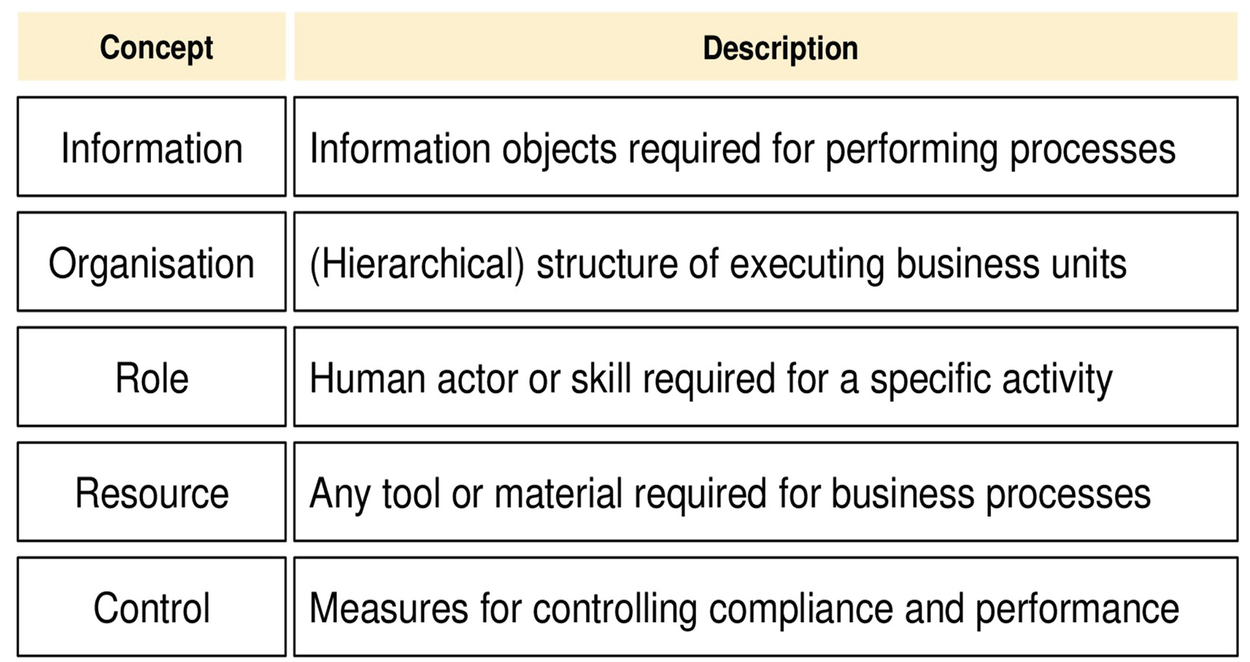Chatper 2.3 - Concepts of Business Architecture
Concepts of Business Architecture
Within this text, we focus on the pivotal elements of business architecture: business capabilities and business objects. Their comprehensive introduction sets the stage for a richer understanding of the broader business architecture landscape. This segment offers a snapshot of various concepts integral to grasping the full scope of business architecture, though only a select few will be explored in depth throughout this book.
An experienced EA consultant’s paper, cited as [13], serves as the basis for the framework depicted in Figure below, which delineates the common concepts of business architecture. This framework is categorized into three main sections:
Strategic Foundations: The Business Motivation
- Drivers: These are the forces that trigger and sustain business activities, ranging from internal impulses like innovative product ideas or personal drive, to external pressures like market gaps or consumer demand.
- Vision: This articulates the company’s overarching aim and what sets it apart in the marketplace, often crafted to inspire and attract stakeholders and customers. It’s a beacon guiding the company, sometimes bordering on the aspirational.
- Objectives: Derived from the vision, these are the concrete milestones the company aims to hit. They must be Specific, Measurable, and Time-Bound to assess achievement.
- Key Performance Indicators (KPIs): Metrics for gauging progress towards objectives.
- Strategy: The high-level blueprint outlining the approach to meet corporate goals and generate value.
While these elements reflect an internal perspective, it’s crucial to integrate external factors such as market dynamics, customer behavior, competitive landscape, and the push for innovation. Constraints, including market conditions, legal frameworks, and industry-specific rules, also shape strategic choices.
The Blueprint: The Business Model
- Value Proposition: The core benefit offered to customers through products or services.
- Value Chain: The sequence of activities transforming inputs into final products, aligned with corporate strategy and objectives.
- Customer Segments: The different groups of customers, each with unique needs and characteristics.
- Suppliers: Entities providing essential resources for the value chain, with strategic suppliers necessitating enduring partnerships.
- Operating Model: The operational constraints defining infrastructure and business practices, shaped by the overarching business motivation.
Operational Dynamics: Business Execution
- Processes: Detailed workflows refining high-level value chain activities for practical implementation.
- Organization: The structural setup within which processes operate.
- Roles: The competencies and skills required for activity execution.
- Resources: Both tangible (physical assets) and intangible (information) resources needed for business operations.
- Control Mechanisms: Systems for monitoring process performance, ensuring compliance, and evaluating business success.

Figure above includes the concept of business capability, though Daniel Simon offers an alternative interpretation of this term.

Figure above clarifies the interplay between drivers, vision, and the formulation of SMART objectives—those that are Specific, Measurable, Achievable, Relevant, and Time-Bound.

Figure above illustrates the business model components, emphasizing the significance of the value proposition, understanding customer segments, outlining value chain steps, and linking them to end-to-end processes within an operational framework.

Lastly, Figure above delves into the business execution layer, familiar from IT-centric education, highlighting the role of information, organizational structure, roles, resources, and control in the effective operation of business processes.